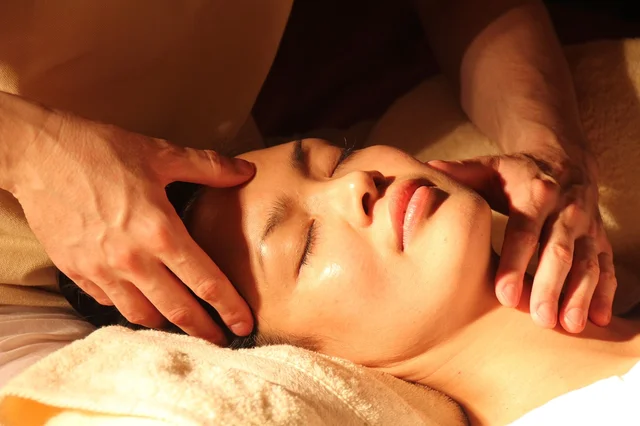What exactly is Acupressure?
Traditional Chinese medicine has used acupuncturpressure for hundreds of years as a healing technique. The belief system that energy or "qi" flows through your body via pathways called meridians is the basis of acupressure. Acupressure is a method of applying pressure on specific areas to help relieve pain and improve circulation. It can also reduce tension and stress, promote healing, and decrease stress. You may also refer to acupressure as Reflexology , trigger point therapy, Shiatsu massage or tuina.

The benefits of Acupressure
There are many benefits to Acupuncture for your mental and physical health. Acupressure has been shown to be beneficial in relieving pain, anxiety, depression and digestive problems. Acupressure may also help reduce inflammation, increase circulation, and improve the immune system. These are just a few of the many benefits that acupressure can bring:
- Relieves pain
- Sleep better
- Stress and tension are reduced
- Reduces depression and anxiety
- Digestive issues can be treated with this product
- Inflammation is reduced
- Increases circulation
- Immune system booster
Acupressure Side Effects
Acupressure can be used safely and has no side effects. Some people might experience skin irritation or bruising. Before you try acupressure, you should consult your doctor if you're pregnant or have any medical conditions. It is also important that you find qualified practitioners who will ensure the best treatment.
Views of Experts on Acupressure
Acupressure has been widely recognized by experts. Acupressure is believed to be an effective method of relieving pain and stress, as well as improving overall health. Acupressure has been shown to be beneficial in treating many conditions including back pain, headaches, stomach problems and menstrual cramps. Experts agree it's a safer and more natural option to other invasive therapies.
How do you get started with Acupressure?
Acupressure can be used at your home to provide a quick and easy healing method. You will first need to find the acupressure points in your body. You can identify these points by the tenderness of their skin or sensitiveness when they are pressed. After you've located them, apply pressure to the area using your fingertips, knuckles or a masseuse.
It is crucial to apply pressure gently but firmly. Do not press down too much or you will cause pain. Tend to hold the pressure for between 10-30 seconds, or until you feel warmth or tingling. You may notice that you can locate and apply pressure more easily as you practice.
Acupressure requires that you take deep breaths. You can relax your mind and body by deep breathing, making the experience even more pleasant and rewarding. You can try different methods, like tapping lightly on the points or using circular motions, as you get more comfortable with this practice.
How to make Acupressure easy and quick
These are some helpful tips that will make your practice of acupressure quick and easy.
- Slowly increase pressure.
- As you apply pressure, focus on the breath.
- Pay attention to how your body reacts to pressure.
- Pay attention to what your body is telling you and adjust pressure as necessary.
- If necessary, take breaks between sessions.
- To flush out any toxins, drink plenty of fluids after every session.
Here are some examples of how Acupressure is done
Acupressure can be performed in many ways. These are just a few examples:
- Use your hands to gently massage the area with your index and thumbs.
- A massager is used to massage the points of acupuncture.
- To roll the points, use a rolling pin with round ends.
- Heat: Use a heat pack or stone to warm the points.
- Use essential oils for relaxation: Massage the points with essential oils.
Alternatives to Acupressure: Why it Is Better
Many people compare acupuncture to acupressure, which is another type of traditional Chinese medicine. Although they share many similarities, there are key differences. Acupressure doesn't require needles to be inserted into the skin. Acupressure can be performed at home and is therefore less painful. Acupressure can often be more cost-effective than acupuncture making it more accessible for people on a tight budget.
Acupressure, an ancient Chinese healing technique that's been practiced for hundreds of years in Traditional Chinese Medicine, is a conclusion. Acupressure has many benefits, both for your physical and psychological health. It can reduce pain, improve sleep quality, relieve anxiety, depression and help with digestion. It is also a safer and more natural option to other invasive therapies. Anyone can integrate acupressure into their lives and reap its many benefits with the help of guidance and practice.